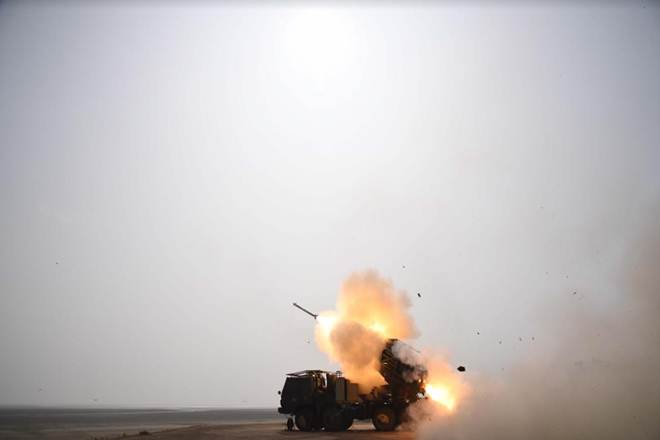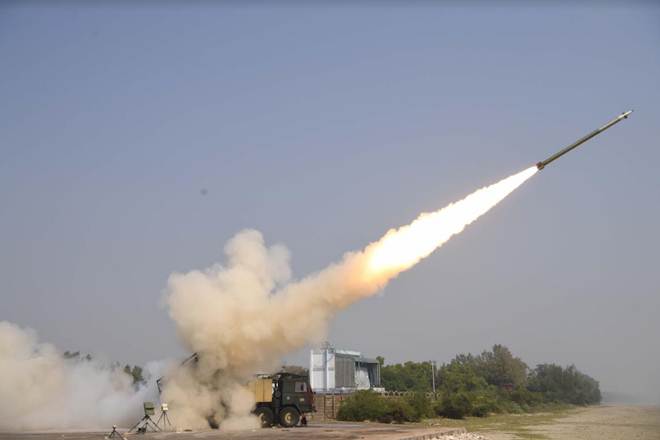As part of the series of flight trials of Pinaka missile system, the Defence Research and Development Organisation (DRDO) conducted the trial aimed at testing low range, functioning of live warhead along with its proximity initiation and salvo launch.
This was the second test carried out by DRDO in two days from Integrated Test Range, Chandipur, off the Odisha coast. In the test conducted on Thursday, the Pinaka missile was fired at 75-kilometre range.

According to the Ministry of Defence, in Friday’s test two Pinaka missiles, was launched in salvo mode and with 60 seconds interval between two firings. The missiles were fired to engage a target located at the 20-kilometre range and high accuracy was achieved.
As has been reported earlier, the indigenous missile was integrated with a live warhead with a proximity fuse and was tracked by multiple range systems viz. telemetry, radars, Electro-Optical Tracking System (EOTS), which confirmed the textbook flight performance.
The DRDO and its other laboratories have been working on extending the range of the indigenous missile system which was fitted with a guidance system in 2013 in an attempt to improve its accuracy. The Made in India system is using a new guided rocket with an Israeli designed Trajectory Control System (TCS) which were tested in 2013 with a range of 65km at that time.
Though the DRDO’s aim is to reach 120 km, so far after several trials have now been increased to 90 km.
In 2006, in an effort to encourage the participation of the private sector’s participation in the defence sector, for equipping two regiments, the Indian Army had awarded Tata Power SED and Larsen & Toubro’s Heavy Engineering Division, had placed an order for 40 Pinaka Multi Barrel Rocket Launchers (MBRL).
After successfully inducting these, the Indian Army placed additional orders for four more regiments in two batches in 2015. This was followed by an additional order for six regiments which was cleared by the Defence Acquisition Council in November 2016, taking the total to up to 10 regiments to be in service by 2022.
There are talks of having a dozen more regiments of these indigenous missiles.

